By endorsing the United Nations 2030 Agenda for Sustainable Development and its 17 Sustainable Development Goals (SDGs) and 169 Targets in 2015, the world community reaffirmed its commitment to Sustainable Development. Through this Agenda, 193 member states pledged to ensure sustained and inclusive economic growth, social inclusion, and environmental protection, fostering peaceful, just, and inclusive societies through a new global partnership.
The Sustainable Development Goals are a call for action by all countries – poor, rich and middle-income – to promote prosperity while protecting the planet. They recognize that ending poverty must go hand-in-hand with strategies that build economic growth and address a range of social needs including education, health, social protection, and job opportunities, while tackling climate change and environmental protection.
At the global level, the 17 Sustainable Development Goals (SDGs) and 169 targets of the new Agenda will be monitored and reviewed using a set of global indicators. The Global Indicator Framework was adopted by the United Nations General Assembly on 6 July 2017. The deliverables of the Green Teams projects have been mapped to the SDGs, Targets and Indicators using the Global Indicator Framework.
The Green Teams
SDGs
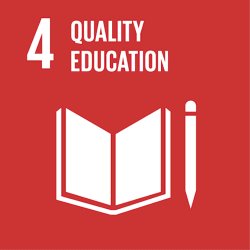
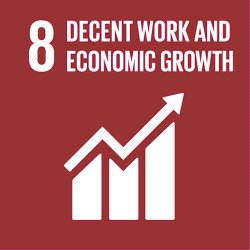
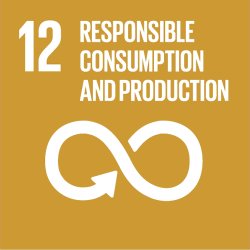
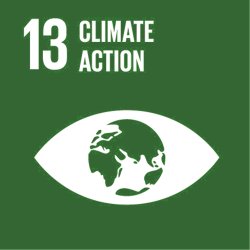
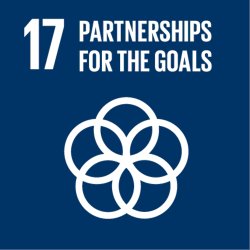
2019
PGIM Real Estate
PGIM Real Estate is a real estate investment management subsidiary of Prudential, dealing with commercial properties. It was founded in 1970 in Newark, New Jersey and currently manages $72.5B in gross assets across North America, Asia, and Europe.
Deliverables:
- Competitor Analysis: Compare PGIM to its competitors in terms of E, S, G reporting to determine steepest competitors, areas of improvement, what they are doing well, etc;
- Resilience Module: How well real estate properties respond to flooding according to certain software. Determine which properties are most at risk;
- Supply Chain: Find an area within the business to enact a greener supply chain;
- Stakeholder Engagement: Add to the value of living/visiting PGIM properties, thus adding to their long-term sustainability as a property;
- Foreign Regulation: Determine how various foreign regulations are affecting areas where PGIM operates, and learn how to comply.
SDGs:

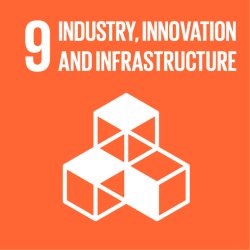
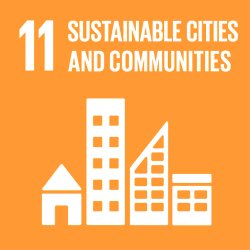


Team’s SDG Targets
- Target 8.4
- Improve progressively, through 2030, global resource efficiency in consumption and production and endeavor to decouple economic growth from environmental degradation, in accordance with the 10-Year Framework of Programmes on Sustainable Consumption and Production, with developed countries taking the lead
- Target 9.4
- By 2030, upgrade infrastructure and retrofit industries to make them sustainable, with increased resource-use efficiency and greater adoption of clean and environmentally sound technologies and industrial processes, with all countries taking action in accordance with their respective capabilities
- Target 11.6
- By 2030, reduce the adverse per capita environmental impact of cities, including by paying special attention to air quality and municipal and other waste management
- Target 12.4
- By 2020, achieve the environmentally sound management of chemicals and all wastes throughout their life cycle, in accordance with agreed international frameworks, and significantly reduce their release to air, water and soil in order to minimize their adverse impacts on human health and the environment
- Target 12.5
- By 2030, substantially reduce waste generation through prevention, reduction, recycling and reuse
- Target 12.6
- Encourage companies, especially large and transnational companies, to adopt sustainable practices and to integrate sustainability information into their reporting cycle
- Target 13.1
- Strengthen resilience and adaptive capacity to climate-related hazards and natural disasters in all countries
City of Newark
Newark is the largest city in New Jersey, with over 270,000 residents. Newark’s Sustainability Office supports the community through efforts in public health and business opportunities.
Deliverables:
- Carbon Foot Print: Develop a carbon footprint analysis & ESR which will lead to the improved health of the community;
- Internal communications and infographics: Develop infographics as a form of communication to the public in an effort to build their understanding of sustainable practices;
- External Sustainability Reporting: Communicate sustainability issues to external stakeholders through sustainability reporting formats such as the Global Reporting Initiative.
SDGs
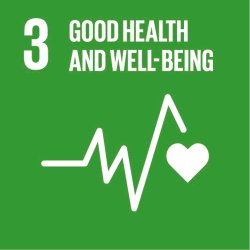


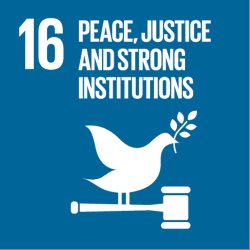
Team’s SDG Targets
- Target 3.9
- By 2030, substantially reduce the number of deaths and illnesses from hazardous chemicals and air, water and soil pollution and contamination
- Target 12.6
- Encourage companies, especially large and transnational companies, to adopt sustainable practices and to integrate sustainability information into their reporting cycle
- Target 13.1
- Strengthen resilience and adaptive capacity to climate-related hazards and natural disasters in all countries
- Target 13.3
- Improve education, awareness-raising and human and institutional capacity on climate change mitigation, adaptation, impact reduction and early warning
- Target 16.12
- Promote and enforce non-discriminatory laws and policies for sustainable development
Sussex County Municipal Authority and Foam Cycle
Sussex County Municipal Authority and Foam Cycle are a public-private partnership driven by the repurposing of expanded polystyrene (EPS also known as styrofoam) used in packaging. The two have established a closed system of foam cycling with the installment of foam cycling containers and a densifying machine, keeping EPS out of the landfill. Since October 2016, the two have diverted 801 cubic yards of raw EPS material
Deliverables:
- Examine recycling practices, profits, and costs to calculate a Return on Investment (ROI) for Foam Cycle;
- Publicly advertise foam cycling on various forms of media. Inform the public on the different methods of recycling food EPS versus packaging EPS;
- Understand the life cycle of EPS products in SCMUA-FC and examine current waste/recycling methods to develop a manual of best practice.
SDGs



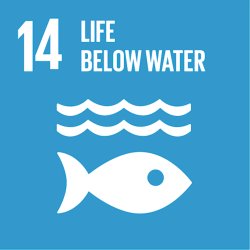
Team’s SDG Targets
- Target 9.b
- Support domestic technology development, research and innovation in developing countries, including by ensuring a conducive policy environment for, inter alia, industrial diversification and value addition commodities
- Target 11.3
- By 2030, enhance inclusive and sustainable urbanization and capacity for participatory, integrated and sustainable human settlement planning and management in all countries
- Target 11.6 By
- 2030, reduce the adverse per capita environmental impact of cities, including by paying special attention to air quality and municipal and other waste management
- Target 12.4
- By 2020, achieve the environmentally sound management of chemicals and all wastes throughout their life cycle, in accordance with agreed international frameworks, and significantly reduce their release to air, water and soil in order to minimize their adverse impacts on human health and the environment
- Target 12.5
- By 2030, substantially reduce waste generation through prevention, reduction, recycling and reuse
- Target 12.6
- Encourage companies, especially large and transnational companies, to adopt sustainable practices and to integrate sustainability information into their reporting cycles
- Target 12.7
- Promote public procurement practices that are sustainable, in accordance with national policies and priorities
- Target 14.1
- By 2025, prevent and significantly reduce marine pollution of all kinds, in particular from land-based activities, including marine debris and nutrient pollution
Newark Science and Sustainability
Utilizing the approach of social entrepreneurship, Newark Science and Sustainability, Inc. (Newark SAS) is a community-driven, 501c3 nonprofit organization based in Newark, NJ that implements various initiatives to increase awareness of environmental, ecological and wellness issues through educational programs and hands-on activities. Newark SAS assists with the creation of self-sustaining and environmentally friendly communities by developing pathways for green jobs, increased self-sufficiency, and broader community empowerment.
Deliverables:
- Clean Energy Park;
- Connect Food Initiatives/Food Oasis;
- Urban Farm Management/workshops outline.
SDGs
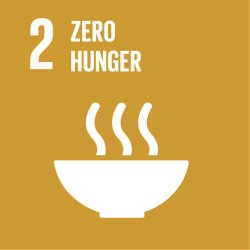
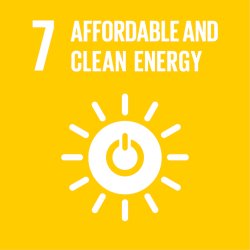

Team’s SDG Targets
- Target 2.4
- By 2030, ensure sustainable food production systems and implement resilient agricultural practices that increase productivity and production, that help maintain ecosystems, that strengthen capacity for adaptation to climate change, extreme weather, drought, flooding and other disasters and that progressively improve land and soil quality
- Target 7.1
- By 2030, ensure universal access to affordable, reliable and modern energy services
- Target 11.a
- Support positive economic, social and environmental links between urban, peri-urban and rural areas by strengthening national and regional development planning
Montclair State University Facilities
Montclair State’s facility department overlooks all of the operations and maintenance of the university. Montclair State University consistently monitors water and energy usage and seeks ways to further reduce its energy footprint through optimizing operating efficiency in plant and building operations.
Deliverables:
- Rain Collection System: Analyze data for rooftops around campus, research and provide an ROI and a cost-benefit analysis for possible implementation of a rain collection system;
- Water Usage: Collect water usage data for residence halls, compare more efficient replacements to fixtures, note/report any leaks, and provide an ROI on these options to find ways to cut water usage in residence halls;
- Awareness Campaign: Find ways to raise awareness of the projects being implemented and awareness of reduced consumption around campus;
- Water Fountain: Create a water fountain database with information on drain height for fountains around the campus and provide an ROI on replacing old fountains with water bottle filling stations while researching the possibility to donate old fountains.
SDGs
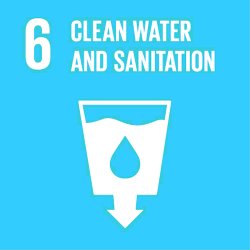



Team’s SDG Targets
- Target 6.1
- By 2030, achieve universal and equitable access to safe and affordable drinking water for all
- Target 6.4
- By 2030, substantially increase water-use efficiency across all sectors and ensure sustainable withdrawals and supply of freshwater to address water scarcity and substantially reduce the number of people suffering from water scarcity
- Target 6.5
- By 2030, implement integrated water resources management at all levels, including through transboundary cooperation as appropriate
- Target 6.b
- Support and strengthen the participation of local communities in improving water and sanitation management
- Target 11.6
- By 2030, reduce the adverse per capita environmental impact of cities, including by paying special attention to air quality and municipal and other waste management
- Target 12.4
- By 2020, achieve the environmentally sound management of chemicals and all wastes throughout their life cycle, in accordance with agreed international frameworks, and significantly reduce their release to air, water and soil in order to minimize their adverse impacts on human health and the environment
- Target 12.5
- By 2030, substantially reduce waste generation through prevention, reduction, recycling and reuse
- Target 12.6
- Encourage companies, especially large and transnational companies, to adopt sustainable practices and to integrate sustainability information into their reporting cycle
- Target 13.1
- Strengthen resilience and adaptive capacity to climate-related hazards and natural disasters in all countries
- Target 13.3
- Improve education, awareness-raising and human and institutional capacity on climate change mitigation, adaptation, impact reduction and early warning
New Jersey Natural Gas
New Jersey Natural Gas is a dependable energy company with the primary focus of providing fuel in the form of natural gas to consumers. In response to climate change, NJNG has shifted their goals to conserve resources and energy while simultaneously helping customers save on their energy bills.
Deliverables:
- Create an Amazon Alexa Skill that will provide consumers with energy saving tips. This will include a game feature based off of the tips to ensure a fun and exciting experience with the content;
- Coach the NJNG staff on how to operate, maintain and update the Alexa skill. This will ensure exponential growth and improvement of the content offered through the energy tips, in line with the ever-changing world;
- Prepare advertising and marketing for the NJNG skill;
- Create a roadmap consisting of the developed platform and find possible pathways for NJNG to take in the future surrounding the Alexa skill.
SDGs




Team’s SDG Targets
- Target 7.3
- By 2030, double the global rate of improvement in energy efficiency
- Target 11.6
- By 2030, reduce the adverse per capita environmental impact of cities, including by paying special attention to air quality and municipal and other waste management
- Target 11.b
- By 2020, substantially increase the number of cities and human settlements adopting and implementing integrated policies and plans towards inclusion, resource efficiency, mitigation and adaptation to climate change, resilience to disasters, and develop and implement, in line with the Sendai Framework for Disaster Risk Reduction 2015–2030, holistic disaster risk management at all levels
- Target 12.1
- Implement the 10-year framework of programmes on sustainable consumption and production, all countries taking action, with developed countries taking the lead, taking into account the development and capabilities of developing countries
- Target 12.2
- By 2030, achieve the sustainable management and efficient use of natural resources
- Target 12.6
- Encourage companies, especially large and transnational companies, to adopt sustainable practices and to integrate sustainability information into their reporting cycle
- Target 12.7
- Promote public procurement practices that are sustainable, in accordance with national policies and priorities
- Target 12.8
- By 2030, ensure that people everywhere have the relevant information and awareness for sustainable development and lifestyles in harmony with nature
- Target 13.3
- Improve education, awareness-raising and human and institutional capacity on climate change mitigation, adaptation, impact reduction and early warning
PSEG
Public Service Enterprise Group Incorporated (PSEG) is New Jersey’s oldest and largest investor owned utility. They are a regulated gas and electric utility company serving 2.2 million electric customers and 1.8 million gas customers, approximately 70 percent of the state’s population. Headquartered in Newark, NJ, they have approximately $35 billion in assets and $11 billion in revenues.
Deliverables:
- Map PSEG’s goals and connect them to the SDG’s, GRI’s, and KPI’s;
- Create a public relations/advertisement for connecting PSEG’s goals, SDG’s, GRI’s and KPI’s with infographics;
- Highlight the company’s achievements that are unknown among staff and public.
SDGs



Team’s SDG Targets
- Target 4.7
- By 2030, ensure that all learners acquire the knowledge and skills needed to promote sustainable development, including, among others, through education for sustainable development and sustainable lifestyles, human rights, gender equality, promotion of a culture of peace and non-violence, global citizenship and appreciation of cultural diversity and of culture’s contribution to sustainable development
- Target 8.3
- Promote development-oriented policies that support productive activities, decent job creation, entrepreneurship, creativity and innovation, and encourage the formalization and growth of micro-, small- and medium- sized enterprises, including through access to financial services
- Target 9.C
- Significantly increase access to information and communications technology and strive to provide universal and affordable access to the Internet in least developed countries by 2020
New Jersey Natural Gas- Renewable Natural Gas
Serving over half a million customers throughout the state, New Jersey Natural Gas is dependent on a safe, reliable and resilient foundation to keep businesses running and provide customers with warmth. The Renewable Natural Gas (RNG) Green Team is determining the feasibility of RNG as a fully interchangeable substitution for conventional natural gas for NJ both environmentally and economically.
Deliverables:
- Determine RNG’s potential for NJ both environmentally and economically by creating models on the different biomass resources;
- Validate the most beneficial way to implement RNG in NJ based off of the findings from each model;
- Calculate and chart the effect that RNG has on greenhouse gas at various levels of penetration;
- Research and document findings from other states and countries;
- Determine the incentive needed to create a viable market for RNG.
SDGs
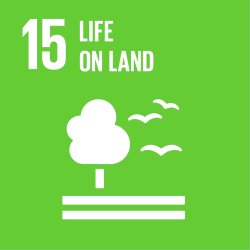




Team’s SDG Targets
- Target 15.4
- By 2030, ensure the conservation of mountain ecosystems, including their biodiversity, in order to enhance their capacity to provide benefits that are essential for sustainable development
- Target 15.6
- Promote fair and equitable sharing of the benefits arising from the utilization of genetic resources and promote appropriate access to such resources, as internationally agreed
- Target 15.a
- Mobilize and significantly increase financial resources from all sources to conserve and sustainably use biodiversity and ecosystems
- Target 7.1
- By 2030, ensure universal access to affordable, reliable and modern energy services
- Target 7.2
- By 2030, increase substantially the share of renewable energy in the global energy mix
- Target 7.a
- By 2030, enhance international cooperation to facilitate access to clean energy research and technology, including renewable energy, energy efficiency and advanced and cleaner fossil-fuel technology, and promote investment in energy infrastructure and clean energy technology
- Target 7.b
- By 2030, expand infrastructure and upgrade technology for supplying modern and sustainable energy services for all in developing countries, in particular least developed countries, small island developing States and landlocked developing countries, in accordance with their respective programmes of support
- Target 12.2
- By 2030, achieve the sustainable management and efficient use of natural resources
- Target 12.8
- By 2030, ensure that people everywhere have the relevant information and awareness for sustainable development and lifestyles in harmony with nature
- Target 13.3
- Improve education, awareness-raising and human and institutional capacity on climate change mitigation, adaptation, impact reduction and early warning
2018
Earth Friendly Products
The family owned and operated Earth Friendly Products is a global manufacturer of environmentally friendly cleaning products. The company was established in 1967, and is known for leading the green cleaning industry with its ECOS Laundry Detergent.
Deliverables:
- Tested wastewater chemicals
- Implemented wastewater treatment options
SDGs



Team’s SDG Targets
- Target 3.9
- By 2030, substantially reduce the number of deaths and illnesses from hazardous chemicals and air, water and soil pollution and contamination
- Indicator 3.9.2
- Mortality rate attributed to unsafe water, unsafe sanitation and lack of hygiene (exposure to unsafe Water, Sanitation and Hygiene for All (WASH) services)
- Indicator 3.9.3
- Mortality rate attributed to unintentional poisoning
- Target 6.3
- By 2030, improve water quality by reducing pollution, eliminating dumping and minimizing release of hazardous chemicals and materials, halving the proportion of untreated wastewater and substantially increasing recycling and safe reuse globally.
- Indicator 6.3.1
- Proportion of wastewater safely treated
- Target 12.4
- By 2020, achieve the environmentally sound management of chemicals and all wastes throughout their life cycle, in accordance with agreed international frameworks, and significantly reduce their release to air, water and soil in order to minimize their adverse impacts on human health and the environment
- Indicator 12.4.2
- Hazardous waste generated per capita and proportion of hazardous waste treated, by type of treatment
Hackensack Meridian Health
Hackensack Meridian Health provides patient-centered health care services in hospital, community and in-home settings. The company advances medicine and treatment options through clinical education and research.
Deliverables:
- Developed of a renewable energy plan
- Assembled a company-specific competitor analysis
SDGs

Team’s SDG Targets
- Target 7.2
- By 2030, increase substantially the share of renewable energy in the global energy mix
- Indicator 7.2.1
- Renewable energy share in the total final energy consumption
- Target 7.3
- By 2030, double the global rate of improvement in energy efficiency
- Indicator 7.3.1
- Energy intensity measured in terms of primary energy and GDP
- Target 7.1
- By 2030, ensure universal access to affordable, reliable and modern energy services
- Indicator 7.1.2
- Proportion of population with primary reliance on clean fuels and technology
Hydrogen House
The Hydrogen House Project is a 501(c)(3) non-profit organization dedicated to education and the pursuit of clean and renewable energy technologies. Mike Strizki, the founder of Hydrogen House, converts solar energy into hydrogen gas and stores the clean energy in hydrogen fuel cells.
Deliverables:
- Fixed and installed solar panel arrays
- Stationed new inverters on site
- Worked on a hydrogen fuel cell refueling station
- Positioned solar panels and hydrogen fuel cells on site
SDGs

Team’s SDG Targets
- Target 7.2
- By 2030, increase substantially the share of renewable energy in the global energy mix
- Indicator 7.2.1
- Renewable energy share in the total final energy consumption
- Target 7.3
- By 2030, double the global rate of improvement in energy efficiency
- Indicator 7.3.1
- Energy intensity measured in terms of primary energy and GDP
- Target 7.1
- By 2030, ensure universal access to affordable, reliable and modern energy services
- Indicator 7.1.2
- Proportion of population with primary reliance on clean fuels and technology
Jersey City
Municipality Description: Jersey City, located between the Hudson and Hackensack Rivers, covers nearly 15 square miles of land at the center of the New York City metropolitan region. Jersey City’s Office of Sustainability researches and implements new community sustainability policies, develops action plans for meeting the City’s climate sustainability goals, and interfaces with the community to raise awareness of sustainable practices and resources.
Deliverables:
- Analyzed greenhouse gas inventory of the city
- Calculated vehicle fleet emission
- Compiled a weatherization building plan
SDGs



Team’s SDG Targets
- Target 7.2
- By 2030, increase substantially the share of renewable energy in the global energy mix
- Indicator 7.2.1
- Renewable energy share in the total final energy consumption
- Target 7.3
- By 2030, double the global rate of improvement in energy efficiency
- Indicator 7.3.1
- Energy intensity measured in terms of primary energy and GDP
- Target 7.1
- By 2030, ensure universal access to affordable, reliable and modern energy services
- Indicator 7.1.2
- Proportion of population with primary reliance on clean fuels and technology
- Target 11.6
- By 2030, reduce the adverse per capita environmental impact of cities, including by paying special attention to air quality and municipal and other waste management
- Indicator 11.6.2
- Annual mean levels of fine particulate matter (e.g PM2.5 and PM10) in cities (population weighted)
- Target 11.b
- By 2020, substantially increase the number of cities and human settlements adopting and implementing integrated policies and plans towards inclusion, resource efficiency, mitigation and adaptation to climate change, resilience to disasters, and develop and implement, in line with the Sendai Framework for Disaster Risk Reduction 2015-2030, holistic disaster risk management at all levels
- Indicator 11.b.1
- Proportion of local governments that adopt and implement local disaster risk reduction strategies in line with the Sendai Framework for Disaster Risk Reduction 2015-2030
- Target 11.b.2
- Number of countries with national and local disaster risk reduction strategies
- Target 11.5
- By 2030, significantly reduce the number of deaths and the number of people affected and substantially decrease the direct economic losses relative to global gross domestic product caused by disasters, including water-related disasters, with a focus on protecting the poor and people in vulnerable situations
- Indicator 11.5.1
- Number of deaths, missing persons and persons affected by disaster per 100,000 people
- Target 11.5.2
- Direct disaster economic loss in relation to global GDP, including disaster damage to critical infrastructure and disruption of basic services
- Target 13.2
- Integrate climate change measures into national policies, strategies and planning
- Indicator 13.2.1
- Number of countries that have communicated the establishment or operationalization of an integrated policy/strategy/plan which increases their ability to adapt to the adverse impacts of climate change, and foster climate resilience and low greenhouse gas emissions development in a manner that does not threaten food production (including a national adaptation plan, nationally determined contribution, national communication, biennial update report or other)
- Target 13.3
- Improve education, awareness-raising and human and institutional capacity on climate change mitigation, adaptation, impact reduction and early warning
- Indicator 13.3.1
- Number of countries that have integrated mitigation, adaptation, impact reduction and early warning into primary, secondary and tertiary curricula
- Target 13.3.2
- Number of countries that have communicated the strengthening of institutional, systemic and individual capacity-building to implement adaptation, mitigation and technology transfer, and development actions
- Target 13.1
- Strengthen resilience and adaptive capacity to climate-related hazards and natural disasters in all countries
- Indicator 13.1.1
- Number of countries with national and local disaster risk reduction strategies
- Target 13.1.2
- Number of deaths, missing persons and persons affected by disaster per 100,000 people
NJ American Water
NJ American Water delivers clean, safe, reliable and affordable water and wastewater services to 2.7 million people in New Jersey. They have a team of top scientists, researchers and plant operates, dedicated to maintaining and delivering clean water.
Deliverables:
- Redesigned and cultivated methods of enforcement for Recycling Program
- Watershed management
- Inventoried of invasive species
- Developed methods of removing invasive species
- Compiled company specific competitor analysis
SDGs



Team’s SDG Targets
- Target 6.3
- By 2030, improve water quality by reducing pollution, eliminating dumping and minimizing release of hazardous chemicals and materials, halving the proportion of untreated wastewater and substantially increasing recycling and safe reuse globally
- Indicator 6.3.1
- Proportion of wastewater safely treated
- Target 12.2
- By 2030, achieve the sustainable management and efficient use of natural resources
- Indicator 12.2.1
- Material footprint, material footprint per capita, and material footprint per GDP
- Indicator 12.2.2
- Domestic material consumption, domestic material consumption per capita, and domestic material consumption per GDP
- Target 12.4
- By 2020, achieve the environmentally sound management of chemicals and all wastes throughout their life cycle, in accordance with agreed international frameworks, and significantly reduce their release to air, water and soil in order to minimize their adverse impacts on human health and the environment
- Indicator 12.4.2
- Hazardous waste generated per capita and proportion of hazardous waste treated, by type of treatment
- Target 12.5
- By 2030, substantially reduce waste generation through prevention, reduction, recycling and reuse
- Indicator 12.5.1
- National recycling rate, tons of material recycled
- Target 15.8
- By 2020, introduce measures to prevent the introduction and significantly reduce the impact of invasive alien species on land and water ecosystems and control or eradicate the priority species
- Indicator 15.8.1
- Proportion of countries adopting relevant national legislation and adequately resourcing the prevention or control of invasive alien species
NJ TRANSIT
NJ TRANSIT is New Jersey’s public transportation corporation. NJ TRANSIT is the nation’s third largest provider of bus, rail and light rail transit, linking major points in New Jersey, New York and Philadelphia. The agency operates an active fleet of 2,221 buses, 1,231 trains and 21 light rail vehicles. NJ TRANSIT provides nearly 270 million passenger trips each year.
Deliverables:
- Analyzed the bus fleet, with electric replacement
- Compiled best practices report and cost analysis of electrical technology
- Generated a methodology on implementation of electric buses on a route
- Provided a case study for implementing electrical vehicles on specific route supplied by company
SDGs



Team’s SDG Targets
- Target 7.2
- By 2030, increase substantially the share of renewable energy in the global energy mix
- Indicator 7.2.1
- Renewable energy share in the total final energy consumption
- Target 11.2
- By 2030, provide access to safe, affordable, accessible and sustainable transport systems for all, improving road safety, notably by expanding public transport, with special attention to the needs of those in vulnerable situations, women, children, persons with disabilities and older persons
- Indicator 11.2.1
- Proportion of population that has convenient access to public transport, by sex, age and persons with disabilities
- Target 12.6
- Encourage companies, especially large and transnational companies, to adopt sustainable practices and to integrate sustainability information into their reporting cycle
- Indicator 12.6.1
- Number of companies publishing sustainability reports
- Target 12.8
- By 2030, ensure that people everywhere have the relevant information and awareness for sustainable development and lifestyles in harmony with nature
- Indicator 12.8.1
- Extent to which (i) global citizenship education and (ii) education for sustainable development (including climate change education) are mainstreamed in (a) national education policies; (b) curricula; (c) teacher education; and (d) student assessment
NJDEP NJ- Department of Environmental Protection
The New Jersey Department of Environmental Protection manages the state’s natural resources and works to solve pollution issues. NJDEP staffs approximately 2,900 people, and is a leader in the country for its pollution prevention efforts and innovative environmental management strategies.
Deliverables:
- Produced marketing materials specific to company programs
- Assisted in creation of Princeton Sustainable Business GIS Map Tour
- Created a membership survey
- Compiled program evaluations and recommendations
- Re-modeled a sustainable registry program
SDGs

Team’s SDG Targets
- Target 12.6
- Encourage companies, especially large and transnational companies, to adopt sustainable practices and to integrate sustainability information into their reporting cycle
- Indicator 12.6.1
- Number of companies publishing sustainability reports
- Target 12.8
- By 2030, ensure that people everywhere have the relevant information and awareness for sustainable development and lifestyles in harmony with nature
- Indicator 12.8.1
- Extent to which (i) global citizenship education and (ii) education for sustainable development (including climate change education) are mainstreamed in (a) national education policies; (b) curricula; (c) teacher education; and (d) student assessment
PGIM
Prudential, PGIM’s parent Fortune 500 company, has subsidiaries that provide insurance, investment management and other financial products and services in over 30 other countries. Prudential Financial’s Global Investment Management (PGIM) has become the 9th largest institutional asset manager in the world with $1 trillion in assets under management as of March 31, 2016. We will be assisting PGIM Real Estate which manages $65 billion in assets.
Deliverables:
- Competitor analysis, focused on SDGs for Prudential Financial
- Developed GRI template
- Made science based target setting for future goals
SDGs

Team’s SDG Targets
- Target 12.6
- Encourage companies, especially large and transnational companies, to adopt sustainable practices and to integrate sustainability information into their reporting cycle
- Indicator 12.6.1
- Number of companies publishing sustainability reports
- Target 12.8
- By 2030, ensure that people everywhere have the relevant information and awareness for sustainable development and lifestyles in harmony with nature
- Indicator 12.8.1
- Extent to which (i) global citizenship education and (ii) education for sustainable development (including climate change education) are mainstreamed in (a) national education policies; (b) curricula; (c) teacher education; and (d) student assessment
PSEG
Public Service Enterprise Group Incorporated (PSEG) is New Jersey’s oldest and largest investor owned utility. They are a regulated gas and electric utility company serving 2.2 million electric customers and 1.8 million gas customers, approximately 70 percent of the state’s population. Headquartered in Newark, NJ, they have approximately $35 billion in assets and $11 billion in revenues.
Deliverables:
- Created report aligning PSEG with climate action goals and Paris Accord
- Drafted an in-depth guideline for how PSEG should create a two degree analysis
SDGs

Team’s SDG Targets
- Target 13.a
- Implement the commitment undertaken by developed-country parties to the United Nations Framework Convention on Climate Change to a goal of mobilizing jointly $100 billion annually by 2020 from all sources to address the needs of developing countries in the context of meaningful mitigation actions and transparency on implementation and fully operationalize the Green Climate Fund through its capitalization as soon as possible
- Indicator 13.a.1
- Mobilized amount of United States dollars per year starting in 2020 accountable towards the $100 billion commitment
- Target 13.3
- Improve education, awareness-raising and human and institutional capacity on climate change mitigation, adaptation, impact reduction and early warning
- Indicator 13.3.1
- Number of countries that have integrated mitigation, adaptation, impact reduction and early warning into primary, secondary and tertiary curricula
- Target 13.3.2
- Number of countries that have communicated the strengthening of institutional, systemic and individual capacity-building to implement adaptation, mitigation and technology transfer, and development actions
- Target 13.1
- Strengthen resilience and adaptive capacity to climate-related hazards and natural disasters in all countries
- Indicator 13.1.1
- Number of countries with national and local disaster risk reduction strategies
- Target 13.1.2
- Number of deaths, missing persons and persons affected by disaster per 100,000 people
Stryker (medical device company)
Stryker is one of the world’s leading medical technology companies that offer innovative products and services in Orthopaedics, Medical and Surgical, and Neurotechnology and Spine that help improve patient and hospital outcomes.
Deliverables:
- Produced Chemical regulations list
- Suggested potential reduction strategies throughout the company
- Compiled and reviewed environmental measures data from all SGA sites
SDGs


Team’s SDG Targets
- Target 12.4
- By 2020, achieve the environmentally sound management of chemicals and all wastes throughout their life cycle, in accordance with agreed international frameworks, and significantly reduce their release to air, water and soil in order to minimize their adverse impacts on human health and the environment
- Indicator 12.4.1
- Number of parties to international multilateral environmental agreements on hazardous waste, and other chemicals that meet their commitments and obligations in transmitting information as required by each relevant agreement
- Target 12.4.2
- Hazardous waste generated per capita and proportion of hazardous waste treated, by type of treatment
- Target 12.5
- By 2030, substantially reduce waste generation through prevention, reduction, recycling and reuse
- Indicator 12.5.1
- National recycling rate, tons of material recycled
Targets and Indicators (ordered by relevance)
- Target 15.8
- By 2020, introduce measures to prevent the introduction and significantly reduce the impact of invasive alien species on land and water ecosystems and control or eradicate the priority species
- Indicator 15.8.1
- Proportion of countries adopting relevant national legislation and adequately resourcing the prevention or control of invasive alien species
SUEZ
Suez provides water and waste recycling services to over 7.5 million people in the United States and Canada. Their mission is to deliver these services safely and cost-effectively, while positively impacting local communities.
Deliverables:
- Generated algal blooms remediation
- Constructed invasive species list
- Compiled and created Compost Program
SDGs

Team’s SDG Targets
- Target 12.5
- By 2030, substantially reduce waste generation through prevention, reduction, recycling and reuse
- Indicator 12.5.1
- National recycling rate, tons of material recycled
The City of Newark
Newark is the largest city in New Jersey, with over 270,000 residents. Newark’s Sustainability Office supports the community through efforts in public health and business opportunities.
Deliverables:
- Created a framework for GHG inventory
- Developed outreach materials for Newark’s Sustainability Plan
- Translated all documents related to the community into Spanish
- Generated a stewardship map for the city of Newark
SDGs



Team’s SDG Targets
- Target 11.b
- By 2020, substantially increase the number of cities and human settlements adopting and implementing integrated policies and plans towards inclusion, resource efficiency, mitigation and adaptation to climate change, resilience to disasters, and develop and implement, in line with the Sendai Framework for Disaster Risk Reduction 2015–2030, holistic disaster risk management at all levels
- Indicator 11.b.1
- Number of countries that adopt and implement national disaster risk reduction strategies in line with the Sendai Framework for Disaster Risk Reduction 2015–2030
- Indicator 11.b.2
- Proportion of local governments that adopt and implement local disaster risk reduction strategies in line with national disaster risk reduction strategies
- Target 11.6
- By 2030, reduce the adverse per capita environmental impact of cities, including by paying special attention to air quality and municipal and other waste management
- Indicator 11.6.1
- Proportion of urban solid waste regularly collected and with adequate final discharge out of total urban solid waste generated, by cities
- Indicator 11.6.2
- Annual mean levels of fine particulate matter (e.g. PM2.5 and PM10) in cities (population weighted)
- Target 12.6
- Encourage companies, especially large and transnational companies, to adopt sustainable practices and to integrate sustainability information into their reporting cycle
- Indicator 12.6.1
- Number of companies publishing sustainability reports
- Target 12.8
- By 2030, ensure that people everywhere have the relevant information and awareness for sustainable development and lifestyles in harmony with nature
- Indicator 12.8.1
- Extent to which (i) global citizenship education and (ii) education for sustainable development (including climate change education) are mainstreamed in (a) national education policies; (b) curricula; (c) teacher education; and (d) student assessment
- Target 16.10
- Ensure public access to information and protect fundamental freedoms, in accordance with national legislation and international agreements
- Indicator 16.10.2
- Number of countries that adopt and implement constitutional, statutory and/or policy guarantees for public access to information
2017
PSEG
Public Service Enterprise Group Incorporated (PSEG) is New Jersey’s oldest and largest investor owned utility. They are a regulated gas and electric utility company serving 2.2 million electric customers and 1.8 million gas customers, approximately 70 percent of the state’s population. Headquartered in Newark, NJ, they have approximately $35 billion in assets and $11 billion in revenues.
PSEG asked their Green Team to develop solutions to improve the collection of Environmental, Social, and Governance (ESG) data internally, and to research new ways to improve external communication of the company’s corporate social responsibility (CSR) initiatives. To achieve these goals, the company’s Green Team developed the following deliverables:
Deliverables:
- Created a database using Oracle that allows PSEG to collect and store ESG data in one centralized location.
- The team completed an industry materiality assessment, third-party reporting assessment and consulted with PSEG representatives to determine the indicators used to populate this database.
- Developed a stakeholder survey to assist PSEG in identifying new ESG issues that are material to both internal and external stakeholders.
- Conducted an analysis of PSEG’s CSR performance within the context of the United Nations Sustainable Development Goals (UNSDG), and provided PSEG with options to leverage the UNSDG to improve overall communication of CSR issues.
SDGs


Team’s SDG Targets
- Target 8.4
- Improve progressively, through 2030, global resource efficiency in consumption and production and endeavor to decouple economic growth from environmental degradation, in accordance with the 10-Year Framework of Programmes on Sustainable Consumption and Production, with developed countries taking the lead.
- Target 8.4.1
- Material footprint, material footprint per capita, and material footprint per GDP.
- Target 8.4.2
- Domestic material consumption, domestic material consumption per capita, and domestic material consumption per GDP.
- Target 12.6
- Encourage companies, especially large and transnational companies, to adopt sustainable practices and to integrate sustainability information into their reporting cycle
- Indicator 12.6.1
- Number of companies publishing sustainability reports
- Target 12.8
- By 2030, ensure that people everywhere have the relevant information and awareness for sustainable development and lifestyles in harmony with nature
- Indicator 12.8.1
- Extent to which (i) global citizenship education and (ii) education for sustainable development (including climate change education) are mainstreamed in (a) national education policies; (b) curricula; (c) teacher education; and (d) student assessment
Prudential Global Investment Management (PGIM)
Prudential, PGIM’s parent Fortune 500 company, has subsidiaries that provide insurance, investment management and other financial products and services in over 30 other countries. Prudential Financial’s Global Investment Management (PGIM) has become the 9th largest institutional asset manager in the world with $1 trillion in assets under management as of March 31, 2016. We will be assisting PGIM Real Estate which manages $65 billion in assets.
PGIM asked their Green Team to assess the company’s overall corporate social responsibility (CSR) performance and provide solutions to improve the company’s reporting on CSR issues. With these objectives in mind, PGIM’s Green Team accomplished the following:
Deliverables:
- Completed a 16 company competitor analysis, providing PGIM with a detailed SWOT (Strengths, Weaknesses, Opportunities and Threats) analysis of its overall CSR performance.
- Provided a business case analysis on the benefits of reporting to the Global Reporting Initiative (GRI) standards and completed a gap analysis of PGIM’s current CSR reporting relative to GRI standards.
- Developed a stakeholder survey to assist PGIM in identifying ESG issues that are material to its stakeholders.
SDGs

Team’s SDG Targets
- Target 12.6
- Encourage companies, especially large and transnational companies, to adopt sustainable practices and to integrate sustainability information into their reporting cycle
- Indicator 12.6.1
- Number of companies publishing sustainability reports
- Target 12.8
- By 2030, ensure that people everywhere have the relevant information and awareness for sustainable development and lifestyles in harmony with nature
- Indicator 12.8.1
- Extent to which (i) global citizenship education and (ii) education for sustainable development (including climate change education) are mainstreamed in (a) national education policies; (b) curricula; (c) teacher education; and (d) student assessment
The City of Newark
Newark is the largest city in New Jersey, with over 270,000 residents. Newark’s Sustainability Office “supports policies and programs that improve public health and quality of life, drive down costs through better stewardship of resources, and expand green job and business opportunities for Newarkers.”
The City of Newark asked its Green Team to assist the city in the development of its 2018 Sustainability Action Plan. To assist the city, Newark’s Green Team produced the following deliverables:
- Administered a stakeholder engagement initiative to provide insight on sustainability initiatives the city should address in its 2018 sustainability report. Specifically, Newark’s Green Team:
- Created 93 focus prompts for stakeholders based on initiatives from the city’s 2013 Sustainability Action Plan, and evaluated these prompts based on their importance and feasibility to stakeholders.
- Clustered data into 12 sections based on stakeholder responses to focus prompts.
- Identified “low hanging fruit” (issues of high importance and high feasibility) issues for the City of Newark to immediately address.
- Volunteered at four Newark Sustainability Summer Series Events and provided recommendations for the city to increase further engagement with the city’s residents.
- Created a series of infographics on greenhouse gas, water usage, energy usage and waste disposal to display and additional city events throughout the year.
SDGs






Team’s SDG Targets
- Target 3.9
- By 2030, substantially reduce the number of deaths and illnesses from hazardous chemicals and air, water and soil pollution and contamination
- Target 3.9.1
- Mortality rate attributed to household and ambient air pollution
- Target 3.9.3
- Mortality rate attributed to unintentional poisoning
- Target 8.4
- Improve progressively, through 2030, global resource efficiency in consumption and production and endeavor to decouple economic growth from environmental degradation, in accordance with the 10-Year Framework of Programs on Sustainable Consumption and Production, with developed countries taking the lead.
- Target 8.4.1
- Material footprint, material footprint per capita, and material footprint per GDP.
- Target 8.4.2
- Domestic material consumption, domestic material consumption per capita, and domestic material consumption per GDP.
- Target 11.3
- By 2030, enhance inclusive and sustainable urbanization and capacity for participatory, integrated and sustainable human settlement planning and management in all countries
- Indicator 11.3.2:
- Proportion of cities with a direct participation structure of civil society in urban planning and management that operate regularly and democratically
- Target 12.6
- Encourage companies, especially large and transnational companies, to adopt sustainable practices and to integrate sustainability information into their reporting cycle
- Indicator 12.6.1
- Number of companies publishing sustainability reports
- Target 12.8
- By 2030, ensure that people everywhere have the relevant information and awareness for sustainable development and lifestyles in harmony with nature
- Indicator 12.8.1
- Extent to which (i) global citizenship education and (ii) education for sustainable development (including climate change education) are mainstreamed in (a) national education policies; (b) curricula; (c) teacher education; and (d) student assessment
- Target 13.3
- Improve education, awareness-raising and human and institutional capacity on climate change mitigation, adaptation, impact reduction and early warning
- Target 13.3.1
- Number of countries that have integrated mitigation, adaptation, impact reduction and early warning into primary, secondary and tertiary curricula
- Target 13.3.2
- Number of countries that have communicated the strengthening of institutional, systemic and individual capacity-building to implement adaptation, mitigation and technology transfer, and development actions
- Target 16.7
- Ensure responsive, inclusive, participatory and representative decision-making at all levels
- Target 16.7.1
- Proportions of positions in national and local institutions, including (a) the legislatures; (b) the public service; and (c) the judiciary, compared to national distributions, by sex, age, persons with disabilities and population groups
- Target 16.7.2
- Proportion of population who believe decision-making is inclusive and responsive, by sex, age, disability and population group
ADP
ADP is global provider of cloud-based Human Capital Management (HCM) solutions. The company also provides clients with business outsourcing services, analytics and compliance expertise.
ADP asked its Green Team to identify, analyze and implement solutions to sustainability challenges at ADP. To assist ADP, it’s Green Team Produced the following deliverables:
Deliverables:
- Developed a series of infographics to increase employees understanding of recycling and proper disposal of electronic waste.
- Created new template for the company’s monthly Green Newsletter, and wrote the company’s newsletters for the months of June and July.
- Developed guidelines and template for a new ADP website that communicates the company’s new and existing sustainability initiatives in a more engaging manner.
- Created a survey and reporting template for ADP sites to determine what Leadership in Energy and Environmental Design (LEED) standards they currently meet, and what criteria they need to fulfill in order to achieve full LEED certification.
- Created a database of grants and other external funding sources for ADP utilize when pursuing new sustainability initiatives.
SDGs





Team’s SDG Targets
- Target 3.9
- By 2030, substantially reduce the number of deaths and illnesses from hazardous chemicals and air, water and soil pollution and contamination
- Target 3.9.1
- Mortality rate attributed to household and ambient air pollution
- Target 3.9.3
- Mortality rate attributed to unintentional poisoning
- Target 8.4
- Improve progressively, through 2030, global resource efficiency in consumption and production and endeavor to decouple economic growth from environmental degradation, in accordance with the 10-Year Framework of Programmes on Sustainable Consumption and Production, with developed countries taking the lead.
- Target 8.4.1
- Material footprint, material footprint per capita, and material footprint per GDP.
- Target 8.4.2
- Domestic material consumption, domestic material consumption per capita, and domestic material consumption per GDP.
- Target 9.4
- By 2030, upgrade infrastructure and retrofit industries to make them sustainable, with increased resource-use efficiency and greater adoption of clean and environmentally sound technologies and industrial processes, with all countries taking action in accordance with their respective capabilities
- Indicator 9.4.1
- CO2 emission per unit of value added
- Target 12.4
- By 2020, achieve the environmentally sound management of chemicals and all wastes throughout their life cycle, in accordance with agreed international frameworks, and significantly reduce their release to air, water and soil in order to minimize their adverse impacts on human health and the environment
- Target 12.4.1
- Number of parties to international multilateral environmental agreements on hazardous waste, and other chemicals that meet their commitments and obligations in transmitting information as required by each relevant agreement
- Target 12.4.2
- Hazardous waste generated per capita and proportion of hazardous waste treated, by type of treatment
- Target 12.6
- Encourage companies, especially large and transnational companies, to adopt sustainable practices and to integrate sustainability information into their reporting cycle
- Indicator 12.6.1
- Number of companies publishing sustainability reports
- Target 12.8
- By 2030, ensure that people everywhere have the relevant information and awareness for sustainable development and lifestyles in harmony with nature
- Indicator 12.8.1
- Extent to which (i) global citizenship education and (ii) education for sustainable development (including climate change education) are mainstreamed in (a) national education policies; (b) curricula; (c) teacher education; and (d) student assessment
- Target 13.3
- Improve education, awareness-raising and human and institutional capacity on climate change mitigation, adaptation, impact reduction and early warning
- Target 13.3.1
- Number of countries that have integrated mitigation, adaptation, impact reduction and early warning into primary, secondary and tertiary curricula
- Target 13.3.2
- Number of countries that have communicated the strengthening of institutional, systemic and individual capacity-building to implement adaptation, mitigation and technology transfer, and development actions
Hackensack Meridian Health
Meridian Health provides patient-centered health care services delivered in hospital, community and in-home settings. The company also advances medicine through clinical education and research.
Hackensack Meridian Health asked its Green Team to improve its internal and external communication of its sustainability initiatives. Specifically, the team worked on the following:
Deliverables:
- Wrote a sustainability report highlighting Hackensack Meridian’s current sustainability initiatives.
- Developed a sustainability e-learning module for employees covering topics such as waste, energy, hazardous chemicals and food.
- Administered an employee survey and conducted a focus group to determine what sustainability issues Hackensack Meridian employees value, and what can be done to increase awareness of the hospital’s sustainability programs.
- Created infographics to be displayed around the hospital that highlight Hackensack’s sustainability programs, and provide information on recycling, water disposal and reducing energy use.
- Started an Instagram account and sample posts to illustrate how to communicate sustainability issues to patients and other stakeholders.
SDGs







Team’s SDG Targets
- Target 3.9
- By 2030, substantially reduce the number of deaths and illnesses from hazardous chemicals and air, water and soil pollution and contamination
- Target 3.9.1
- Mortality rate attributed to household and ambient air pollution
- Target 3.9.3
- Mortality rate attributed to unintentional poisoning
- Target 6.3
- By 2030, improve water quality by reducing pollution, eliminating dumping and minimizing release of hazardous chemicals and materials, halving the proportion of untreated wastewater and substantially increasing recycling and safe reuse globally
- Target 6.3.1
- Proportion of wastewater safely treated
- Target 6.3.2
- Proportion of bodies of water with good ambient water quality
- Target 7.3
- By 2030, double the global rate of improvement in energy efficiency
- Target 7.3.1
- Energy intensity measured in terms of primary energy and GDP
- Target 8.4
- Improve progressively, through 2030, global resource efficiency in consumption and production and endeavor to decouple economic growth from environmental degradation, in accordance with the 10-Year Framework of Programmes on Sustainable Consumption and Production, with developed countries taking the lead.
- Target 8.4.1
- Material footprint, material footprint per capita, and material footprint per GDP.
- Target 8.4.2
- Domestic material consumption, domestic material consumption per capita, and domestic material consumption per GDP.
- Target 9.4
- By 2030, upgrade infrastructure and retrofit industries to make them sustainable, with increased resource-use efficiency and greater adoption of clean and environmentally sound technologies and industrial processes, with all countries taking action in accordance with their respective capabilities
- Indicator 9.4.1
- CO2 emission per unit of value added
- Target 12.4
- By 2020, achieve the environmentally sound management of chemicals and all wastes throughout their life cycle, in accordance with agreed international frameworks, and significantly reduce their release to air, water and soil in order to minimize their adverse impacts on human health and the environment
- Target 12.4.1
- Number of parties to international multilateral environmental agreements on hazardous waste, and other chemicals that meet their commitments and obligations in transmitting information as required by each relevant agreement
- Target 12.4.2
- Hazardous waste generated per capita and proportion of hazardous waste treated, by type of treatment
- Target 12.6
- Encourage companies, especially large and transnational companies, to adopt sustainable practices and to integrate sustainability information into their reporting cycle
- Indicator 12.6.1
- Number of companies publishing sustainability reports
- Target 12.8
- By 2030, ensure that people everywhere have the relevant information and awareness for sustainable development and lifestyles in harmony with nature
- Indicator 12.8.1
- Extent to which (i) global citizenship education and (ii) education for sustainable development (including climate change education) are mainstreamed in (a) national education policies; (b) curricula; (c) teacher education; and (d) student assessment
- Target 13.3
- Improve education, awareness-raising and human and institutional capacity on climate change mitigation, adaptation, impact reduction and early warning
- Target 13.3.1
- Number of countries that have integrated mitigation, adaptation, impact reduction and early warning into primary, secondary and tertiary curricula
- Target 13.3.2
- Number of countries that have communicated the strengthening of institutional, systemic and individual capacity-building to implement adaptation, mitigation and technology transfer, and development actions
Honeywell
Honeywell is a global manufacturer of a variety of commercial and consumer products, and provides engineering services and aerospace systems solutions to customers worldwide.
Honeywell asked its Green Teams to assess its internal sustainability performance, develop new strategies to reduce energy, water and waste; organize its sustainability data; and improve external communications of sustainability issues. To achieve these goals, the team produced the following deliverables.
Deliverables:
- Analyzed Honeywell waste data and calculated the monthly/annual waste diversion rate (WDR) for each of the company’s sites worldwide.
- Created a dashboard using excel that allows Honeywell to view WDR by site, region and business group. This dashboard also provided information on the company’s overall non-hazardous waste, hazardous waste, landfill waste, and recycled waste.
- Mapped each Honeywell site using Arc GIS for better visualization of WDR data by site.
- Identified high-performing sites and low-performing sites that Honeywell can engage with to improve future performance.
- Wrote a “Best Practice Guidelines” outlining opportunities to improve sustainability performance at Honeywell.
- These guidelines addressed topics such as installing water filling stations and no flush urinals and eliminating Styrofoam cups.
- Provided an excel tool for the company to conduct a return on investment (ROI) and Cost Benefit Analysis (CBA) on specific topics.
- Completed a competitor analysis to provide Honeywell with an analysis on how it is performing relative to its peers, and what steps that can take to improve its overall sustainability reporting.
- Developed guidelines for Honeywell to improve its sustainability communications on its website.
SDGs






Team’s SDG Targets
- Target 3.9
- By 2030, substantially reduce the number of deaths and illnesses from hazardous chemicals and air, water and soil pollution and contamination
- Target 3.9.1
- Mortality rate attributed to household and ambient air pollution
- Target 3.9.3
- Mortality rate attributed to unintentional poisoning
- Target 6.3
- By 2030, improve water quality by reducing pollution, eliminating dumping and minimizing release of hazardous chemicals and materials, halving the proportion of untreated wastewater and substantially increasing recycling and safe reuse globally
- Target 6.3.1
- Proportion of wastewater safely treated
- Target 6.3.2
- Proportion of bodies of water with good ambient water quality
- Target 8.4
- Improve progressively, through 2030, global resource efficiency in consumption and production and endeavor to decouple economic growth from environmental degradation, in accordance with the 10-Year Framework of Programmes on Sustainable Consumption and Production, with developed countries taking the lead.
- Target 8.4.1
- Material footprint, material footprint per capita, and material footprint per GDP.
- Target 8.4.2
- Domestic material consumption, domestic material consumption per capita, and domestic material consumption per GDP.
- Target 9.4
- By 2030, upgrade infrastructure and retrofit industries to make them sustainable, with increased resource-use efficiency and greater adoption of clean and environmentally sound technologies and industrial processes, with all countries taking action in accordance with their respective capabilities
- Indicator 9.4.1
- CO2 emission per unit of value added
- Target 12.4
- By 2020, achieve the environmentally sound management of chemicals and all wastes throughout their life cycle, in accordance with agreed international frameworks, and significantly reduce their release to air, water and soil in order to minimize their adverse impacts on human health and the environment
- Target 12.4.1
- Number of parties to international multilateral environmental agreements on hazardous waste, and other chemicals that meet their commitments and obligations in transmitting information as required by each relevant agreement
- Target 12.4.2
- Hazardous waste generated per capita and proportion of hazardous waste treated, by type of treatment
- Target 12.6
- Encourage companies, especially large and transnational companies, to adopt sustainable practices and to integrate sustainability information into their reporting cycle
- Indicator 12.6.1
- Number of companies publishing sustainability reports
- Target 12.8
- By 2030, ensure that people everywhere have the relevant information and awareness for sustainable development and lifestyles in harmony with nature
- Indicator 12.8.1
- Extent to which (i) global citizenship education and (ii) education for sustainable development (including climate change education) are mainstreamed in (a) national education policies; (b) curricula; (c) teacher education; and (d) student assessment
- Target 13.3
- Improve education, awareness-raising and human and institutional capacity on climate change mitigation, adaptation, impact reduction and early warning
- Target 13.3.1
- Number of countries that have integrated mitigation, adaptation, impact reduction and early warning into primary, secondary and tertiary curricula
- Target 13.3.2
- Number of countries that have communicated the strengthening of institutional, systemic and individual capacity-building to implement adaptation, mitigation and technology transfer, and development actions
Earth Friendly Products (ECOS)
ECOS was established in 1967, and is a global manufacturer of environmentally friendly cleaning products.
ECOS asked its Green Team to research ways to utilize its wastewater runoff and increase employee engagement in sustainability. To that end, the ECOS team produced the following deliverables:
Deliverables:
- Researched three major wastewater treatments–activated carbon filtration, coagulation flocculation and air stripping of volatile organic compounds (VOCs) – that ECOS could implement to treat its wastewater on site.
- By treating wastewater onsite, the team found that they could reduce disposal costs by 50%.
- Researched testing companies for ECOS, and provided information on pricing, sampling, and testing methodologies.
- Developed a number of initiatives for the company to increase employee engagement including:
- Writing and administering a survey to gauge employee understanding of sustainability.
- Implementing a sustainability kickoff week to increase employee participation in ECOS’ sustainability initiatives.
- Updating the company’s bulletin board to facilitate easier communication of sustainability related issues.
SDGs






Team’s SDG Targets
- Target 3.9
- By 2030, substantially reduce the number of deaths and illnesses from hazardous chemicals and air, water and soil pollution and contamination
- Target 3.9.1
- Mortality rate attributed to household and ambient air pollution
- Target 3.9.3
- Mortality rate attributed to unintentional poisoning
- Target 6.3
- By 2030, improve water quality by reducing pollution, eliminating dumping and minimizing release of hazardous chemicals and materials, halving the proportion of untreated wastewater and substantially increasing recycling and safe reuse globally
- Target 6.3.1
- Proportion of wastewater safely treated
- Target 6.3.2
- Proportion of bodies of water with good ambient water quality
- Target 8.4
- Improve progressively, through 2030, global resource efficiency in consumption and production and endeavor to decouple economic growth from environmental degradation, in accordance with the 10-Year Framework of Programmes on Sustainable Consumption and Production, with developed countries taking the lead.
- Target 8.4.1
- Material footprint, material footprint per capita, and material footprint per GDP.
- Target 8.4.2
- Domestic material consumption, domestic material consumption per capita, and domestic material consumption per GDP.
- Target 9.4
- By 2030, upgrade infrastructure and retrofit industries to make them sustainable, with increased resource-use efficiency and greater adoption of clean and environmentally sound technologies and industrial processes, with all countries taking action in accordance with their respective capabilities
- Indicator 9.4.1
- CO2 emission per unit of value added
- Target 12.4
- By 2020, achieve the environmentally sound management of chemicals and all wastes throughout their life cycle, in accordance with agreed international frameworks, and significantly reduce their release to air, water and soil in order to minimize their adverse impacts on human health and the environment
- Target 12.4.1
- Number of parties to international multilateral environmental agreements on hazardous waste, and other chemicals that meet their commitments and obligations in transmitting information as required by each relevant agreement
- Target 12.4.2
- Hazardous waste generated per capita and proportion of hazardous waste treated, by type of treatment
- Target 12.6
- Encourage companies, especially large and transnational companies, to adopt sustainable practices and to integrate sustainability information into their reporting cycle
- Indicator 12.6.1
- Number of companies publishing sustainability reports
- Target 12.8
- By 2030, ensure that people everywhere have the relevant information and awareness for sustainable development and lifestyles in harmony with nature
- Indicator 12.8.1
- Extent to which (i) global citizenship education and (ii) education for sustainable development (including climate change education) are mainstreamed in (a) national education policies; (b) curricula; (c) teacher education; and (d) student assessment
- Target 13.3
- Improve education, awareness-raising and human and institutional capacity on climate change mitigation, adaptation, impact reduction and early warning
- Target 13.3.1
- Number of countries that have integrated mitigation, adaptation, impact reduction and early warning into primary, secondary and tertiary curricula
- Target 13.3.2
- Number of countries that have communicated the strengthening of institutional, systemic and individual capacity-building to implement adaptation, mitigation and technology transfer, and development actions
Humanscale
Humanscale is a global manufacturer of ergonomic products such as self-adjusting seating, sit/stand desks, monitor arms and task lighting.
Humanscale asked its team to help them research sustainability initiatives that would help the company achieve the International Living Future Institute’s Living Product Challenge certification. To that end, the Humanscale team produced the following deliverables:
Deliverables:
- Researched “carbon handprinting” initiatives for the company to implement, such as donating extra wooden pallets to Habitat for Humanity and other organizations.
- Created guidelines for Humanscale to implement an energy audit at its Piscataway facility.
- Developing infographics on recycling and waste disposal to better educate its office employees on proper waste management techniques.
- Provided options for Humanscale to implement submeters at their facilities to better track and reduce overall energy use.
- Researched native landscaping options for Humanscale to reduce its overall water usage.
SDGs







Team’s SDG Targets
- Target 3.9
- By 2030, substantially reduce the number of deaths and illnesses from hazardous chemicals and air, water and soil pollution and contamination
- Target 3.9.1
- Mortality rate attributed to household and ambient air pollution
- Target 3.9.3
- Mortality rate attributed to unintentional poisoning
- Target 6.3
- By 2030, improve water quality by reducing pollution, eliminating dumping and minimizing release of hazardous chemicals and materials, halving the proportion of untreated wastewater and substantially increasing recycling and safe reuse globally
- Target 6.3.1
- Proportion of wastewater safely treated
- Target 6.3.2
- Proportion of bodies of water with good ambient water quality
- Target 7.3
- By 2030, double the global rate of improvement in energy efficiency
- Target 7.3.1
- Energy intensity measured in terms of primary energy and GDP
- Target 8.4
- Improve progressively, through 2030, global resource efficiency in consumption and production and endeavor to decouple economic growth from environmental degradation, in accordance with the 10-Year Framework of Programmes on Sustainable Consumption and Production, with developed countries taking the lead.
- Target 8.4.1
- Material footprint, material footprint per capita, and material footprint per GDP.
- Target 8.4.2
- Domestic material consumption, domestic material consumption per capita, and domestic material consumption per GDP.
- Target 9.4
- By 2030, upgrade infrastructure and retrofit industries to make them sustainable, with increased resource-use efficiency and greater adoption of clean and environmentally sound technologies and industrial processes, with all countries taking action in accordance with their respective capabilities
- Indicator 9.4.1
- CO2 emission per unit of value added
- Target 12.4
- By 2020, achieve the environmentally sound management of chemicals and all wastes throughout their life cycle, in accordance with agreed international frameworks, and significantly reduce their release to air, water and soil in order to minimize their adverse impacts on human health and the environment
- Target 12.4.1
- Number of parties to international multilateral environmental agreements on hazardous waste, and other chemicals that meet their commitments and obligations in transmitting information as required by each relevant agreement
- Target 12.4.2
- Hazardous waste generated per capita and proportion of hazardous waste treated, by type of treatment
- Target 12.6
- Encourage companies, especially large and transnational companies, to adopt sustainable practices and to integrate sustainability information into their reporting cycle
- Indicator 12.6.1
- Number of companies publishing sustainability reports
- Target 12.8
- By 2030, ensure that people everywhere have the relevant information and awareness for sustainable development and lifestyles in harmony with nature
- Indicator 12.8.1
- Extent to which (i) global citizenship education and (ii) education for sustainable development (including climate change education) are mainstreamed in (a) national education policies; (b) curricula; (c) teacher education; and (d) student assessment
- Target 13.3
- Improve education, awareness-raising and human and institutional capacity on climate change mitigation, adaptation, impact reduction and early warning
- Target 13.3.1
- Number of countries that have integrated mitigation, adaptation, impact reduction and early warning into primary, secondary and tertiary curricula
- Target 13.3.2
- Number of countries that have communicated the strengthening of institutional, systemic and individual capacity-building to implement adaptation, mitigation and technology transfer, and development actions
Princeton University
Located in Mercer County NJ, Princeton Township has a population of over 28,000. Sustainable Princeton is a partnership between the Princeton Environmental Commission and the New Jersey Sustainability State Institute, with consultation with the residents of Princeton.
Princeton University asked its team to work with the Township of Princeton on its waste management program. To that end the team produced the following deliverables:
Deliverables:
- Developed solutions to reduce bulk waste and increase composting. Specific solutions include:
- Shifting to a pay-as-you throw trash disposal program.
- Implementing a three bin system to better categorize and organize waste for haulers.
- Creating a sticker system for bulk waste to identify what can be reused and what can be disposed.
- Presented solutions to the Township of Princeton and compiled a report of recommendations and case studies to the Township.
SDGs





Team’s SDG Targets
- Target 3.9
- By 2030, substantially reduce the number of deaths and illnesses from hazardous chemicals and air, water and soil pollution and contamination
- Target 3.9.1
- Mortality rate attributed to household and ambient air pollution
- Target 3.9.3
- Mortality rate attributed to unintentional poisoning
- Target 8.4
- Improve progressively, through 2030, global resource efficiency in consumption and production and endeavor to decouple economic growth from environmental degradation, in accordance with the 10-Year Framework of Programmes on Sustainable Consumption and Production, with developed countries taking the lead.
- Target 8.4.1
- Material footprint, material footprint per capita, and material footprint per GDP.
- Target 8.4.2
- Domestic material consumption, domestic material consumption per capita, and domestic material consumption per GDP.
- Target 9.4
- By 2030, upgrade infrastructure and retrofit industries to make them sustainable, with increased resource-use efficiency and greater adoption of clean and environmentally sound technologies and industrial processes, with all countries taking action in accordance with their respective capabilities
- Indicator 9.4.1
- CO2 emission per unit of value added
- Target 11.b
- By 2020, substantially increase the number of cities and human settlements adopting and implementing integrated policies and plans towards inclusion, resource efficiency, mitigation and adaptation to climate change, resilience to disasters, and develop and implement, in line with the Sendai Framework for Disaster Risk Reduction 2015–2030, holistic disaster risk management at all levels
- Target 11.b.1
- Number of countries that adopt and implement national disaster risk reduction strategies in line with the Sendai Framework for Disaster Risk Reduction 2015–2030
- Target 11.b.2
- Proportion of local governments that adopt and implement local disaster risk reduction strategies in line with national disaster risk reduction strategies
- Target 11.6
- By 2030, reduce the adverse per capita environmental impact of cities, including by paying special attention to air quality and municipal and other waste management
- Target 11.6.1
- Proportion of urban solid waste regularly collected and with adequate final discharge out of total urban solid waste generated, by cities
- Target 11.6.2
- Annual mean levels of fine particulate matter (e.g. PM2.5 and PM10) in cities (population weighted)
- Target 12.4
- By 2020, achieve the environmentally sound management of chemicals and all wastes throughout their life cycle, in accordance with agreed international frameworks, and significantly reduce their release to air, water and soil in order to minimize their adverse impacts on human health and the environment
- Target 12.4.1
- Number of parties to international multilateral environmental agreements on hazardous waste, and other chemicals that meet their commitments and obligations in transmitting information as required by each relevant agreement
- Target 12.4.2
- Hazardous waste generated per capita and proportion of hazardous waste treated, by type of treatment
- Target 12.6
- Encourage companies, especially large and transnational companies, to adopt sustainable practices and to integrate sustainability information into their reporting cycle
- Indicator 12.6.1
- Number of companies publishing sustainability reports
- Target 12.8
- By 2030, ensure that people everywhere have the relevant information and awareness for sustainable development and lifestyles in harmony with nature
- Indicator 12.8.1
- Extent to which (i) global citizenship education and (ii) education for sustainable development (including climate change education) are mainstreamed in (a) national education policies; (b) curricula; (c) teacher education; and (d) student assessment
2016
PSEG
Public Service Enterprise Group Incorporated (PSEG) is New Jersey’s oldest and largest investor owned utility. A regulated gas and electric utility company serving 2.2 million electric customers and 1.8 million gas customers, approximately 70 percent of the state’s population, it holds approximately $35 billion in assets and $11 billion in revenues. They are headquartered in Newark, New Jersey.
Project Summary
PSEG asked its Green Team to assist them in developing a new sustainability report written to the standards of the Global Reporting Initiative (GRI).
Deliverables:
- Created an excel tool identifying “core” (non-industry specific) and utility specific indicators that would allow PSEG to report to the GRI G4 standards. This tool was used by PSEG to report on its progress towards meeting GRI standards on the company’s website.
- Created a competitor analysis identifying sustainability best practices and offering opportunities for PSEG to expand upon its current sustainability initiatives.
- Filmed a public service announcement (PSA) to increase employee engagement with the company’s sustainability initiatives.
SDGs


Team’s SDG Targets
- Target 8.4
- Improve progressively, through 2030, global resource efficiency in consumption and production and endeavor to decouple economic growth from environmental degradation, in accordance with the 10-Year Framework of Programmes on Sustainable Consumption and Production, with developed countries taking the lead.
- Target 8.4.1
- Material footprint, material footprint per capita, and material footprint per GDP.
- Target 8.4.2
- Domestic material consumption, domestic material consumption per capita, and domestic material consumption per GDP.
- Target 12.6
- Encourage companies, especially large and transnational companies, to adopt sustainable practices and to integrate sustainability information into their reporting cycle
- Indicator 12.6.1
- Number of companies publishing sustainability reports
- Target 12.8
- By 2030, ensure that people everywhere have the relevant information and awareness for sustainable development and lifestyles in harmony with nature
- Indicator 12.8.1
- Extent to which (i) global citizenship education and (ii) education for sustainable development (including climate change education) are mainstreamed in (a) national education policies; (b) curricula; (c) teacher education; and (d) student assessment
Bristol Myers Squibb
Bristol-Myers Squibb (BMS), a Fortune 500 global bio-pharma company that manufactures prescription pharmaceuticals in several therapeutic areas, including cancer, HIV/AIDS, cardiovascular disease, diabetes, hepatitis, rheumatoid arthritis and psychiatric disorders, has delivered 12 new medicines to patients in the past seven years, and has strong commitment to the preservation of natural resources.
Project Summary
BMS asked their Green Team to research innovative ways to increase employee engagement with existing and new sustainability initiatives at BMS.
Deliverables:
- Developed an employee survey designed to provide BMS with insight into understanding and improving employee engagement with its sustainability program.
- Conducted a focus group to understand factors that would motivate younger employees to engage with BMS’ current sustainability initiatives.
- Proposed a redesign of BMS’ internal “Go Green Sharepoint” site to better promote the company’s sustainability initiatives amongst employees. This redesign included the implementation of interactive global maps that allow employees to view best practice initiatives at BMS sites around the world.
- Provided a competitor analysis of initiatives to promote corporate sustainability and improve employee relations.
SDGs


Team’s SDG Targets
- Target 8.4
- Improve progressively, through 2030, global resource efficiency in consumption and production and endeavor to decouple economic growth from environmental degradation, in accordance with the 10-Year Framework of Programmes on Sustainable Consumption and Production, with developed countries taking the lead.
- Target 8.4.1
- Material footprint, material footprint per capita, and material footprint per GDP.
- Target 8.4.2
- Domestic material consumption, domestic material consumption per capita, and domestic material consumption per GDP.
- Target 12.6
- Encourage companies, especially large and transnational companies, to adopt sustainable practices and to integrate sustainability information into their reporting cycle
- Indicator 12.6.1
- Number of companies publishing sustainability reports
- Target 12.8
- By 2030, ensure that people everywhere have the relevant information and awareness for sustainable development and lifestyles in harmony with nature
- Indicator 12.8.1
- Extent to which (i) global citizenship education and (ii) education for sustainable development (including climate change education) are mainstreamed in (a) national education policies; (b) curricula; (c) teacher education; and (d) student assessment
Cox Printers
Founded in 1907 and supported by three generations of the Cox family, Cox Printers was purchased by the Kaufman family in 1982. Cox Printers offers a wide range of services to its customers from off-set and digital printing to direct mail, signage and marketing.
Project Summary
Cox Printers asked their Green Team to provide solutions to reduce their carbon footprint, identify/develop a carbon calculator for present and future outputs, and establish environmentally sustainable partnerships with local community organizations.
Deliverables:
- Calculated Cox Printer’s carbon footprint using carbon calculator developed at University of California Berkley, and provided an analysis of how Cox Printers’ footprint compares to similar businesses in its region.
- Recommended utilizing biodegradable shrink wrap as a new packaging solution, after conducting a cost analysis. Based on their results, Cox put an order to use this shrink wrap on future packaging projects.
- Developed two separate “green roof” proposals designed to reduce heating/cooling costs and overall carbon emissions, while increasing employee engagement with the company’s sustainability initiatives.
- Provided solutions to reduce electricity consumption and improve vehicle fleet efficiency.
- Proposed donating excess produce from the company’s green roof to a local food bank.
- Recommended purchasing Pyrex and Glasslock Containers for company kitchen to reduce employee waste consumption.
SDGs






Team’s SDG Targets
- Target 2.1
- By 2030, end hunger and ensure access by all people, in particular the poor and people in vulnerable situations, including infants, to safe, nutritious and sufficient food all year round
- Target 2.1.1
- Prevalence of undernourishment
- Target 2.1.2
- Prevalence of moderate or severe food insecurity in the population, based on the Food Insecurity Experience Scale (FIES)
- Target 2.2
- By 2030, end all forms of malnutrition, including achieving, by 2025, the internationally agreed targets on stunting and wasting in children under 5 years of age, and address the nutritional needs of adolescent girls, pregnant and lactating women and older persons
- Target 2.2.1
- Prevalence of stunting (height for age <-2 standard deviation from the median of the World Health Organization (WHO) Child Growth Standards) among children under 5 years of age
- Target 2.2.2
- Prevalence of malnutrition (weight for height >+2 or <-2 standard deviation from the median of the WHO Child Growth Standards) among children under 5 years of age, by type (wasting and overweight)
- Target 7.2
- By 2030, increase substantially the share of renewable energy in the global energy mix
- Indicator 7.2.1
- Renewable energy share in the total final energy consumption
- Target 7.3
- By 2030, double the global rate of improvement in energy efficiency
- Indicator 7.3.1
- Energy intensity measured in terms of primary energy and GDP
- Target 8.4
- Improve progressively, through 2030, global resource efficiency in consumption and production and endeavor to decouple economic growth from environmental degradation, in accordance with the 10-Year Framework of Programmes on Sustainable Consumption and Production, with developed countries taking the lead.
- Target 8.4.1
- Material footprint, material footprint per capita, and material footprint per GDP.
- Target 8.4.2
- Domestic material consumption, domestic material consumption per capita, and domestic material consumption per GDP.
- Target 12.5
- By 2030, substantially reduce waste generation through prevention, reduction, recycling and reuse
- Indicator 12.5.1
- National recycling rate, tons of material recycled
- Target 12.6
- Encourage companies, especially large and transnational companies, to adopt sustainable practices and to integrate sustainability information into their reporting cycle
- Indicator 12.6.1
- Number of companies publishing sustainability reports
- Target 12.8
- By 2030, ensure that people everywhere have the relevant information and awareness for sustainable development and lifestyles in harmony with nature
- Indicator 12.8.1
- Extent to which (i) global citizenship education and (ii) education for sustainable development (including climate change education) are mainstreamed in (a) national education policies; (b) curricula; (c) teacher education; and (d) student assessment
- Target 13.3
- Improve education, awareness-raising and human and institutional capacity on climate change mitigation, adaptation, impact reduction and early warning
- Target 13.3.1
- Number of countries that have integrated mitigation, adaptation, impact reduction and early warning into primary, secondary and tertiary curricula
- Target 13.3.2
- Number of countries that have communicated the strengthening of institutional, systemic and individual capacity-building to implement adaptation, mitigation and technology transfer, and development actions
Greener by Design
With its multidisciplinary team of research, financial management and environmental planning professionals, Greener by Design brings a comprehensive understanding of the economic and policy underpinnings of a rapidly changing environmental landscape as well as a fresh perspective on how technology, innovation and legislation will influence the market in years to come.
Project Summary
Greener by Design asked its Green Team to provide research and technical support for various internal and client based projects.
Deliverables
- Wrote a whitepaper comparing Leadership in Energy and Environmental Design (LEED™) certified buildings to those constructed using a LEED™ approach.
- Provided a map simulation of under-utilized and closed properties for a large sanitation company. These maps provide a projection for potential redevelopment of these underutilized sites, while also creating an inventory of those properties in the region.
- Researched how a microgrid can incorporate existing renewable, or newly distribute, energy generated at Maher Terminals Llc. in order to reduce emissions.
- Analyzed marketing and communication material and strategies for small, sustainability management consulting firms.
SDGs




Team’s SDG Targets
- Target 7.2
- By 2030, increase substantially the share of renewable energy in the global energy mix
- Indicator 7.2.1
- Renewable energy share in the total final energy consumption
- Target 7.3
- By 2030, double the global rate of improvement in energy efficiency
- Indicator 7.3.1
- Energy intensity measured in terms of primary energy and GDP
- Target 9.1
- Develop quality, reliable, sustainable and resilient infrastructure, including regional and transborder infrastructure, to support economic development and human well-being, with a focus on affordable and equitable access for all
- Target 9.1.1
- Proportion of the rural population who live within 2 km of an all-season road
- Target 9.1.2
- Passenger and freight volumes, by mode of transport
- Target 9.4
- By 2030, upgrade infrastructure and retrofit industries to make them sustainable, with increased resource-use efficiency and greater adoption of clean and environmentally sound technologies and industrial processes, with all countries taking action in accordance with their respective capabilities
- Indicator 9.4.1
- CO2 emission per unit of value added
- Target 11.a
- Support positive economic, social and environmental links between urban, peri-urban and rural areas by strengthening national and regional development planning
- Indicator 11.a.1
- Proportion of population living in cities that implement urban and regional development plans integrating population projections and resource needs, by size of city
- Target 12.6
- Encourage companies, especially large and transnational companies, to adopt sustainable practices and to integrate sustainability information into their reporting cycle
- Indicator 12.6.1
- Number of companies publishing sustainability reports
- Target 12.8
- By 2030, ensure that people everywhere have the relevant information and awareness for sustainable development and lifestyles in harmony with nature
- Indicator 12.8.1
- Extent to which (i) global citizenship education and (ii) education for sustainable development (including climate change education) are mainstreamed in (a) national education policies; (b) curricula; (c) teacher education; and (d) student assessment
New Jersey Manufacturer’s Insurance
New Jersey Manufacturer’s Insurance began in 1913 to serve factory workers seeking insurance. In more than a century, NJM has grown to offer personal auto, commercial auto, workers’ compensation, homeowners and umbrella insurance, from three locations – West Trenton, Parsippany and Hammonton.
Project Summary
NJM asked its Green Team to identify low-cost, easy to implement programs that benefit the environment, share information about green programs supported by businesses similar to their company, review current sustainability practices and provide plans for best practices and return on investment (ROI) analyses for their West Trenton location.
Deliverables:
- Created a proprietary carbon calculator to calculate NJM’s annual carbon footprint and identified opportunities to reduce CO2 emissions.
- Conducted ROI analyses on installing hand dryers, solar panels and LED lighting at NJM’s West Trenton campus.
- Provided a detailed report on installing electric vehicle (EV) charging stations at NJM’s West Trenton location.
- Created infographics highlighting NJM’s current sustainability efforts, as well educational infographics designed to reduce employee waste and increase recycling.
SDGs



Team’s SDG Targets
- Target 9.1
- Develop quality, reliable, sustainable and resilient infrastructure, including regional and transborder infrastructure, to support economic development and human well-being, with a focus on affordable and equitable access for all
- Target 9.1.1
- Proportion of the rural population who live within 2 km of an all-season road
- Target 9.1.2
- Passenger and freight volumes, by mode of transport
- Target 9.4
- By 2030, upgrade infrastructure and retrofit industries to make them sustainable, with increased resource-use efficiency and greater adoption of clean and environmentally sound technologies and industrial processes, with all countries taking action in accordance with their respective capabilities
- Indicator 9.4.1
- CO2 emission per unit of value added
- Target 12.6
- Encourage companies, especially large and transnational companies, to adopt sustainable practices and to integrate sustainability information into their reporting cycle
- Indicator 12.6.1
- Number of companies publishing sustainability reports
- Target 12.8
- By 2030, ensure that people everywhere have the relevant information and awareness for sustainable development and lifestyles in harmony with nature
- Indicator 12.8.1
- Extent to which (i) global citizenship education and (ii) education for sustainable development (including climate change education) are mainstreamed in (a) national education policies; (b) curricula; (c) teacher education; and (d) student assessment
PGIM
Prudential, PGIM’s parent Fortune 500 company, has subsidiaries that provide insurance, investment management and other financial products and services in over 30 other countries. Prudential Financial’s Global Investment Management (PGIM) has become the 9th largest institutional asset manager in the world with $1 trillion in assets under management as of March 31, 2016. We will be assisting PGIM Real Estate who manage $65 billion in assets.
Project Summary
PGIM Real Estate has asked its Green Team to help create a Sustainability Report Template that aligns with the Global Reporting Initiative (GRI) reporting framework, identify opportunities to enhance its existing sustainability initiatives, and develop methods to engage property managers/employees in reducing waste.
Deliverables:
- Developed a GRI reporting for template, identifying “core” (non-industry specific) and real estate specific indicators that would allow PGIM to report to the GRI G4 Standards. The team also provided PGIM with information on how to test “materiality,” in order to help PGIM better identify reporting indicators in the future.
- Wrote a “Get Green Guide” – a 30+ page document identifying best practices in waste management and recycling.
- Designed posters and other infographics to be displayed at PGIM managed properties that educate employees on the best ways to reduce waste and increase recycling. (see below)
- Created a competitor analysis identifying sustainability best practice in the real estate sector and offering PGIM opportunities to expand upon its current sustainability initiatives.
- PGIM Recycling and Composting Posters:
- PGIM e-waste of time poster
- PGIM recycling paper
SDGs

Team’s SDG Targets
- Target 12.5
- By 2030, substantially reduce waste generation through prevention, reduction, recycling and reuse
- Indicator 12.5.1
- National recycling rate, tons of material recycled
- Target 12.6
- Encourage companies, especially large and transnational companies, to adopt sustainable practices and to integrate sustainability information into their reporting cycle
- Indicator 12.6.1
- Number of companies publishing sustainability reports
- Target 12.8
- By 2030, ensure that people everywhere have the relevant information and awareness for sustainable development and lifestyles in harmony with nature
- Indicator 12.8.1
- Extent to which (i) global citizenship education and (ii) education for sustainable development (including climate change education) are mainstreamed in (a) national education policies; (b) curricula; (c) teacher education; and (d) student assessment
